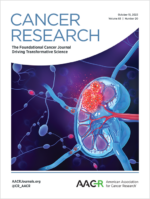
Postdoctoral Fellow, 2016 – 2019
Currently: Senior Scientist at Nikon BioImaging Laboratory (NBIL)
Graduate Degree: University of Connecticut (Storrs, CT)
Gaurav’s Publications from the Sarosiek Laboratory:
 Radiotherapy-Induced Neurocognitive Impairment Is Driven by Heightened Apoptotic Priming in Early Life and Prevented by Blocking BAX. Radiotherapy-Induced Neurocognitive Impairment Is Driven by Heightened Apoptotic Priming in Early Life and Prevented by Blocking BAX.Rumani Singh, Stacey Yu, Marwa Osman, Zintis Inde, Cameron Fraser, Abigail Cleveland, Nicole Almanzar, Chuan Bian Lim, Gaurav Joshi, Johan Spetz, Xingping Qin, Sneh Toprani, Zachary Nagel, Matthew C Hocking, Robert A Cormack, Torunn I Yock, Jeffrey W Miller, Zhi-Min Yuan, Timothy Gershon, Kristopher Sarosiek. Cancer Research, 2023 October 13. PDF. External. |
 Age-dependent regulation of SARS-CoV-2 cell entry genes and cell death programs correlates with COVID-19 severity. Age-dependent regulation of SARS-CoV-2 cell entry genes and cell death programs correlates with COVID-19 severity.Zintis Inde, Ben A. Croker (co-first author), Clarence Yapp, Gaurav Joshi, Johan Spetz, Cameron Fraser, Xingping Qin, Le Xu, Brian Deskin, Elisa Ghelfi, Gabrielle Webb, Aaron F. Carlin, Yangfei Peipei Zhu, Sandra Leibel, Aaron F. Garretson, Alex E. Clark, Jason M. Duran, Victor Pretorius, Laura E. Crotty-Alexander, Chendi Li, Jamie Casey Lee, Chhinder Sodhi, David J. Hackam, Xin Sun, Aaron Hata, Lester Kobzik, Jeffrey Miller, Jin-Ah Park, Douglas Brownfield, Hongpeng Jia, Kristopher A. Sarosiek. Science Advances, August 18, 2021. PDF. PubMed. |
 Zintis Inde, Clarence Yapp, Gaurav Joshi, Johan Spetz, Cameron Fraser, Brian Deskin, Elisa Ghelfi, Chhinder Sodhi, David J. Hackam, Lester Kobzik, Ben A. Croker, Douglas Brownfield, Hongpeng Jia, Kristopher A. Sarosiek. Age-dependent regulation of SARS-CoV-2 cell entry genes and cell death programs correlates with COVID-19 disease severity (Preprint). Zintis Inde, Clarence Yapp, Gaurav Joshi, Johan Spetz, Cameron Fraser, Brian Deskin, Elisa Ghelfi, Chhinder Sodhi, David J. Hackam, Lester Kobzik, Ben A. Croker, Douglas Brownfield, Hongpeng Jia, Kristopher A. Sarosiek. Age-dependent regulation of SARS-CoV-2 cell entry genes and cell death programs correlates with COVID-19 disease severity (Preprint).BioRxiv, September 13, 2020. PDF. BioRxiv. |
|
|
About me:
My scientific interests include any thing and every thing cell death, oxidative stress, lysosomes, nanoparticles and microscopy. I joined the Sarosiek lab to further understand cell death processes and apply this knowledge to either induce cell death (in case of cancer) or inhibit cell death to prevent some of the disease pathologies. My particular interest is to characterize the intrinsic cell death pathway following lysosomal leakage.
I did my grad school at the University of Connecticut (not far from here) where I studied silica induced oxidative stress and cell death in alveolar macrophages. Silica is responsible for the fibrotic lung disease silicosis in workers exposed to silica dust over a long period of time in certain occupational settings. Using live cell imaging, I have tracked the fate of macrophages from silica particle uptake to death. We found that silica can generate reactive oxygen species independent of NADPH oxidases and cause phagolysosomal leakage to induce cell death. Further, there is heterogeneity in cell death, where in, most cells die by apoptosis whereas some by necrosis. Please check out some of the movies from my work:
During summers I like to bike (wouldn’t call myself a cyclist) and kayak. During winters, I enjoy exploring Boston.
Click here for my pubmed
http://www.ncbi.nlm.nih.gov/pubmed/?term=joshi+gn



